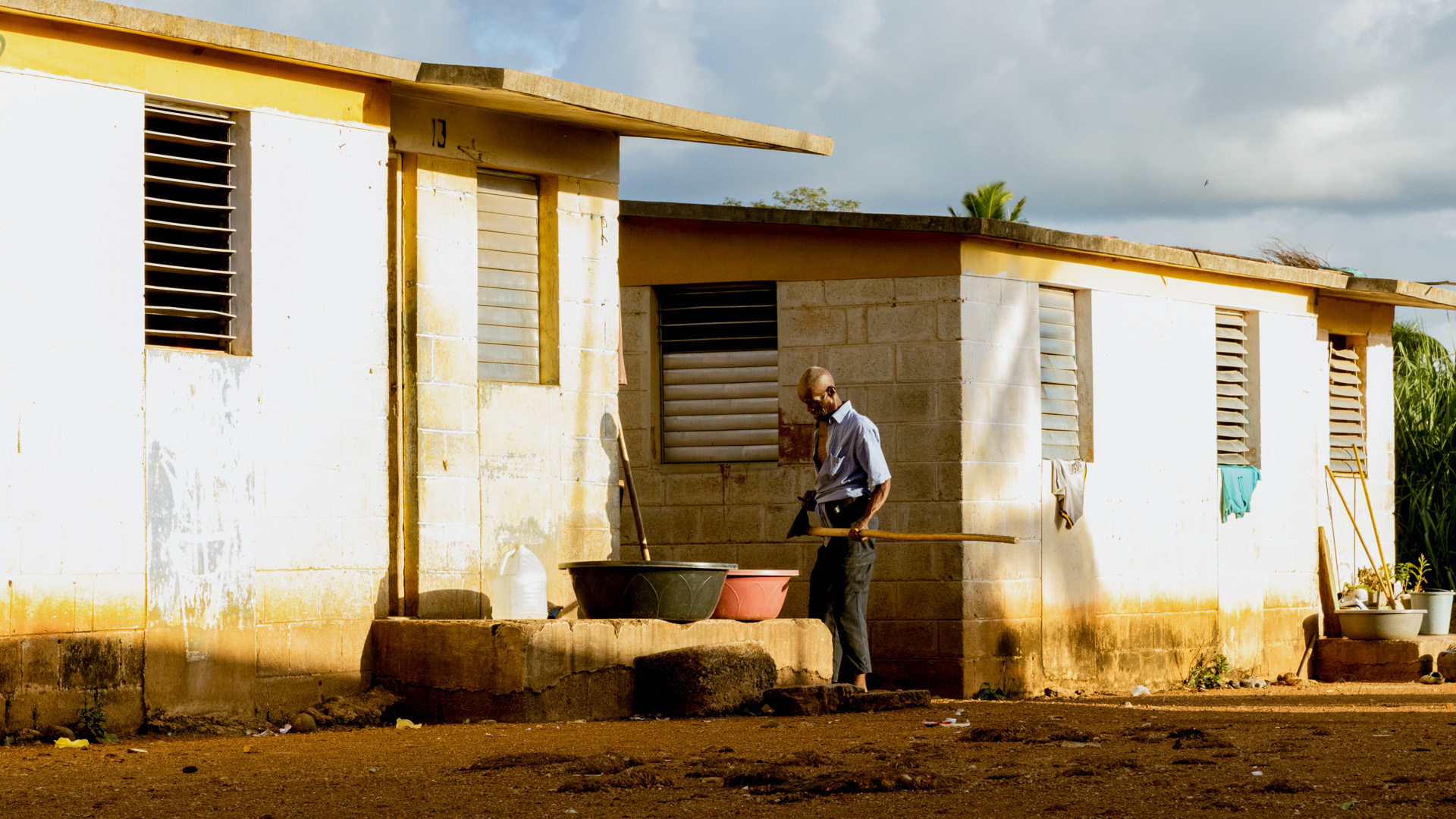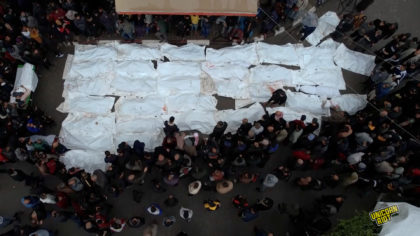Despite US Import Ban, Sugar Cane Cutters Still Face Abuse in Dominican Republic
El Seibo, Dominican Republic — Fields of sugar cane are spread as far as the eye can see across Central Romana Corp.’s plantation. As the largest sugar producer and exporter, and the largest private landowner and employer in the Dominican Republic, the company has built an empire that covers most of the eastern part of the country.
Hidden among the maze of sugar cane live the people who built the empire — sugar cane cutters and their families. These workers, mostly undocumented Haitian immigrants or stateless Dominicans of Haitian descent, labor for upward of 10 hours a day while only making the equivalent of $4 USD per ton of cut sugar, one worker who has cut cane for 35 years explained to Unicorn Riot.
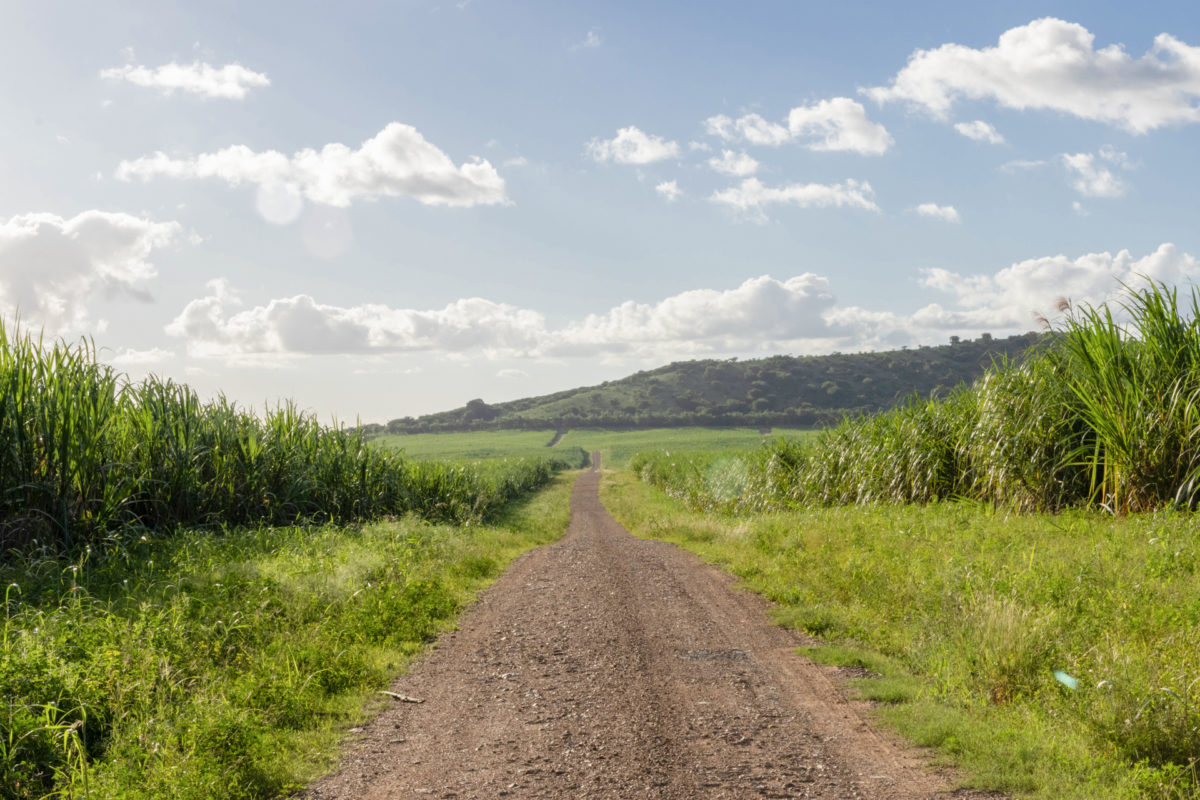
Appalling conditions for the workforce have been an “open secret” for decades, according to labor watchdog Corporate Accountability Lab, with seven reports from the U.S. Department of Labor’s Bureau of International Labor Affairs that detail labor rights abuses since 2013. But it was not until 2022 when the U.S. Customs and Border Protection (CBP) decided to step in.
After a federal investigation found abuse of vulnerability, isolation, withholding wages, abusive working and living conditions, and excessive overtime — all indicators of forced labor — CBP issued a withhold release order on imports of raw sugar and sugar-based products from Central Romana on November 23, 2022.
Immediately after the announcement, Central Romana reacted with “great astonishment” to CBP’s declaration in a Spanish-language press release and said: “We hold our heads high because we know that for more than a century we have acted correctly, facing challenges with determination and constantly managing [the workers’] resolution.”
Visiting Central Romana one year after the ban tells a different story — most of the ‘bateyes,’ or ramshackle settlements built within the plantation where sugar cane workers and their families live, do not have electricity or running water.
“They Only Want You as Long as You Can Work”
Unicorn Riot traveled to eight of these bateyes during the tiempo muerto (dead time) shortly before the zafra, or sugar cane harvest, which started on December 10.
“They only want you as long as you can work,” said Daniel, a stateless Dominican of Haitian descent who has been cutting sugar cane since he was 16. That is not the now-23-year-old’s real name. Like many other workers Unicorn Riot spoke with, he feared reprisals from Central Romana if he was identified.
He explained that the workers worked more than they were paid: “We live off of this because it’s the only thing we have.”
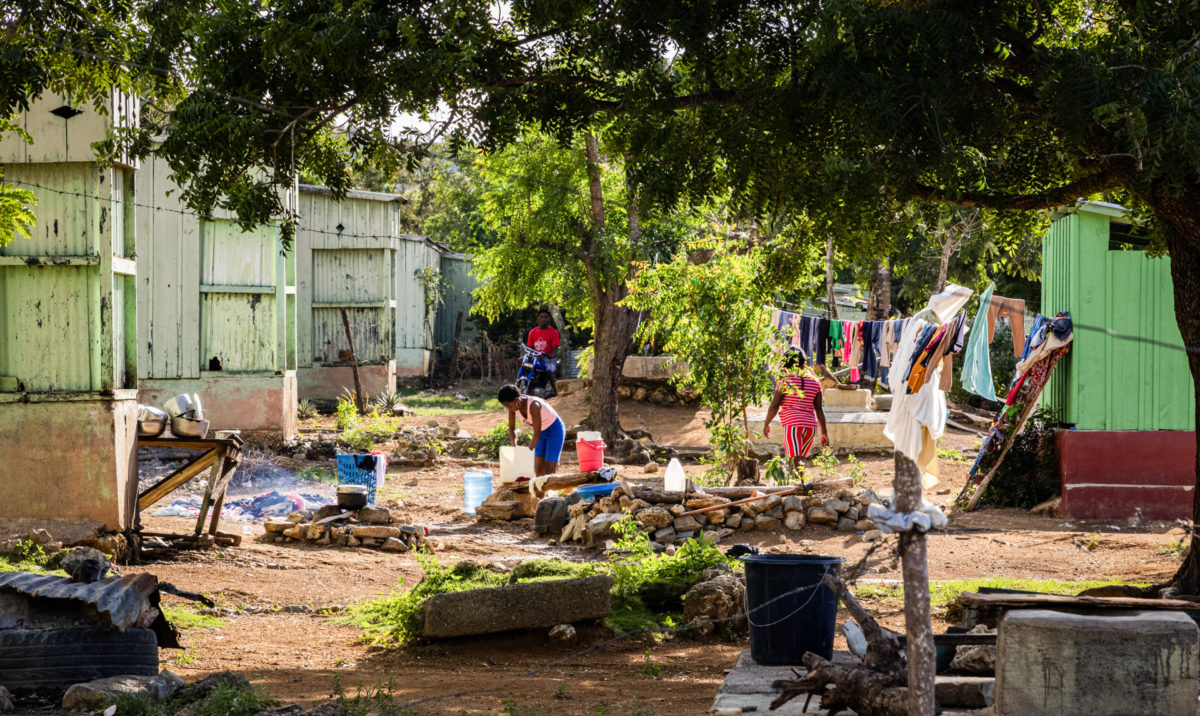
Daniel is one among more than 200,000 Dominicans of Haitian descent who were stripped of their Dominican citizenship in 2013 by “La Sentencia.” The decision, which applied retroactively between 1929 and 2010 as well as forward in time, “created a situation of statelessness of a magnitude never seen before in the Americas,” according to the Inter-American Commission on Human Rights.
“Their labor is so cheap because of their immigration status,” said an organizer with Reconoci.do, an activist group fighting for the status and rights of Dominicans of Haitian descent and against the inhumane treatment of sugar cane cutters. The group has been trying to organize sugar cane cutters, but they know there is a long road ahead of them, especially because many workers do not know how to read or write. However, they have been giving workshops about human rights and sexual education to lay down the base needed for labor organizing.
Alongside the forced labor indicators found by U.S. Customs and Border Patrol, the Corporate Accountability Lab has found signs of other indicators “including intimidation and threats and debt bondage” that “have also been present historically at Central Romana and should have been cited in the [withhold release order].”
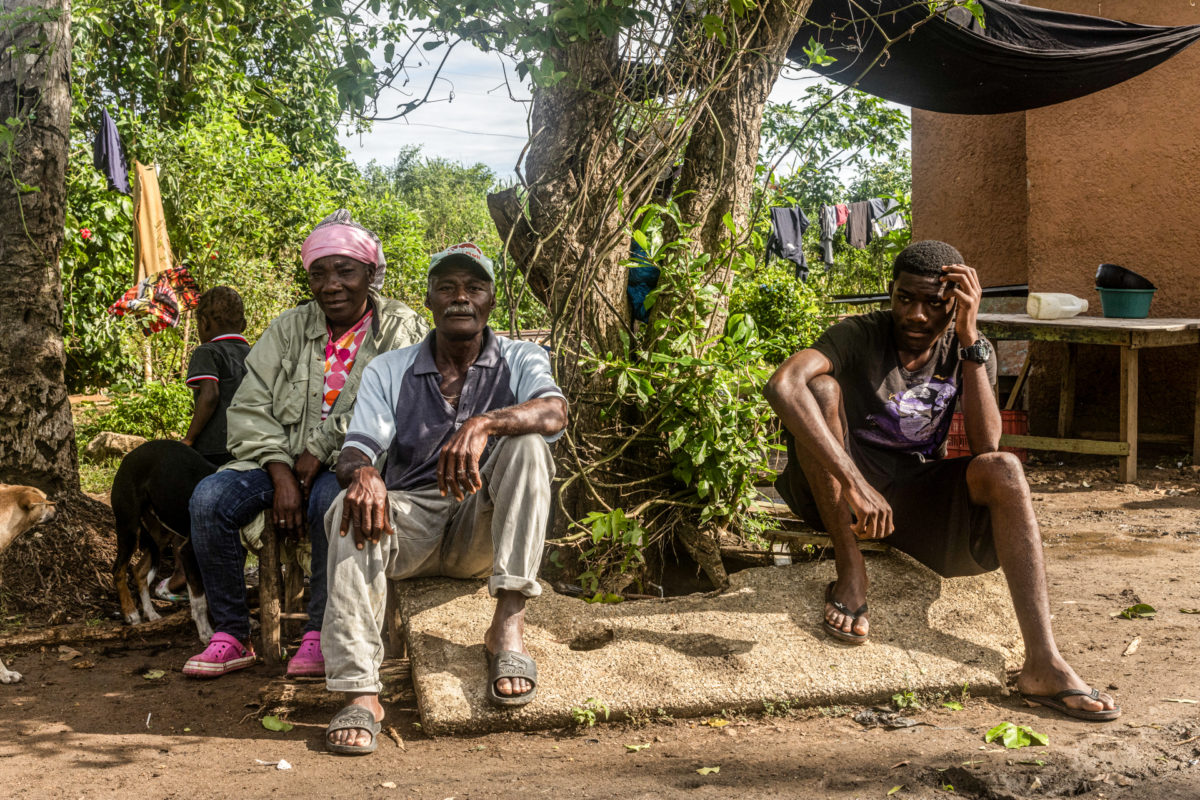
Since the November 2022 import ban, there have been some improvements to conditions in the bateyes. Central Romana announced an 18 percent raise for sugar cane cutters over three years, as well as repainting some bateyes. They also recently announced private health insurance for workers.
Central Romana has been installing solar energy in about 500 houses and more than 700 rooms since July 2022, Jorge Sturla, Central Romana’s director of communications, told Unicorn Riot over email. However, multiple residents told Unicorn Riot that the charge produced from these solar installations is rarely enough for more than charging cell phones or lighting a single bulb. Many still do not have electricity.
Workers hired by Central Romana, and accompanied by armed security guards, tore down at least one electrified batey. The encampment’s destruction was part of a “multi-year” improvement plan, Sturla told Mother Jones. Residents from that batey were forced to move to another settlement, which still does not have electricity. Sturla did not respond to Unicorn Riot’s questions about the destroyed bateyes.
Meanwhile, Central Romana generates its own electricity and supplies the city of La Romana with water from its own 25-year-old aqueduct, when many of the bateyes lack potable water.
Sweet Empire
A multi-billion dollar company, Central Romana has deep connections to the levers of power in both the Dominican Republic and the United States. Carlos Morales Troncoso, former president of Central Romana, later became vice president of the Dominican Republic, and mere days after the ban was issued, the Dominican government built a working group consisting of several government ministers and Central Romana officials to aid in lifting the ban.
Meanwhile, Central Romana is owned in part by the U.S.-based Fanjul Corporation, which is run by the billionaire Fanjul family. Brothers Alfonso and Jose Fanjul hold top positions across Central Romana and Florida Crystals Corporation, a Florida-based sugar company, as well as being the owners of ASR Group, the world’s largest refiner and marketer of cane sugar. ASR Group owns brands like Domino and C&H. They supply sugar to Hershey, which claims it is committed to only use “responsibly sourced” sugar on their website.
Central Romana is also the largest producer of beef in the country, operates the La Romana Casa de Campo International Airport, the Casa de Campo luxury resort, and the Costasur real estate complex.
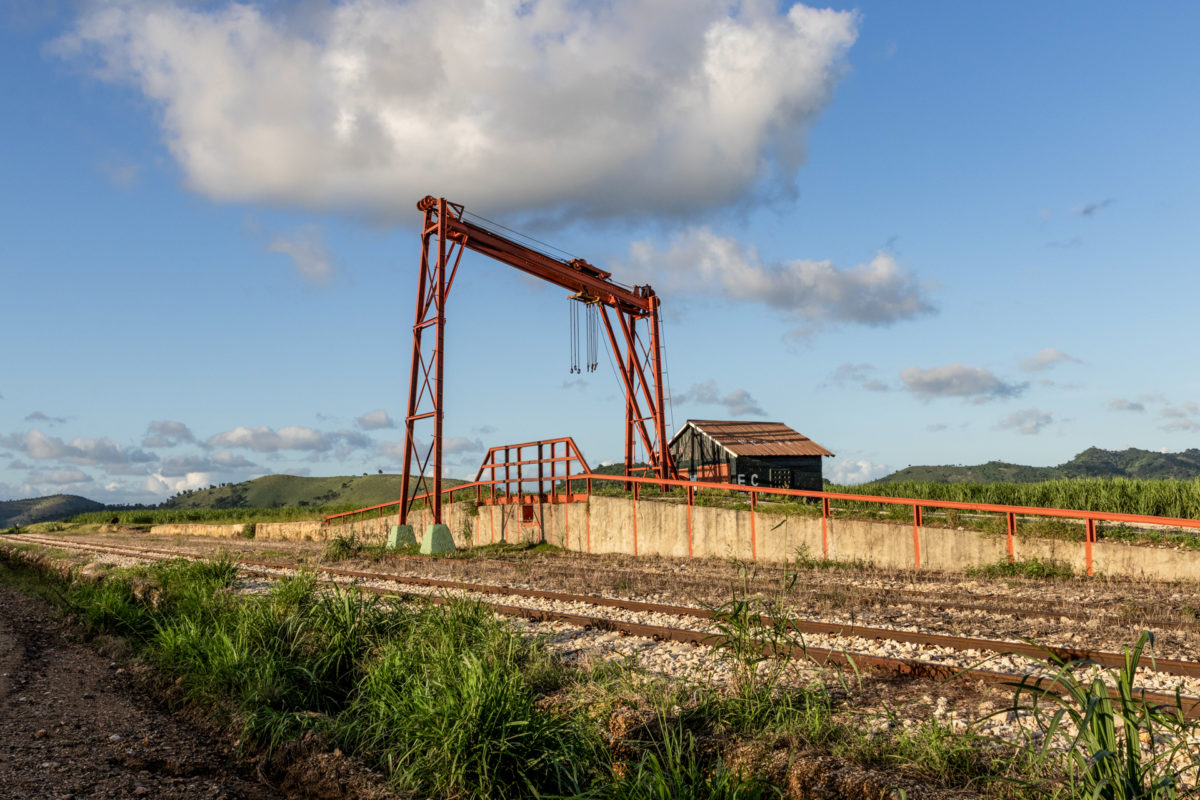
Alfonso and Jose Fanjul have donated extensively to Democrats and Republicans, respectively, to secure their government subsidies. John McCain once called them the “first family of corporate welfare.”
“For us, Central Romana’s commitment remains firm in continuing to implement the best labor practices and social responsibility, not only with our workers, but with the communities of the Eastern region and our country, as it has always been,” Sturla said in an email to Unicorn Riot
The United States government has recently been investigating the working and living conditions of sugar cane cutters. Federal agents, including officers from the Department of Homeland Security (DHS), interviewed dozens of workers in late March of this year about labor conditions in Central Romana’s plantations, according to a report from Mother Jones. The department has reportedly started a criminal investigation into the company. Kenneth Kennedy, a retired special agent, told Mother Jones that any criminal charges against Central Romana leadership that come from Homeland Security Investigations would be “unprecedented.”
The Dominican Minister of Labor, Luis Miguel De Camps, claimed that various forced labor indicators had been proven false in an interview with local paper Diario Libre, yet the import ban remains in place. Central Romana remains active in U.S. politics in an attempt to overturn the ban. The company spent at least $231,000 in 2023 on lobbying the U.S. Senate, the House of Representatives, Department of State, Department of Transportation, and U.S. Customs and Border Protection.
“They are trying to use political power to make the [withhold release order] go away without really doing the hard and deep work that needs to be done to change the underlying conditions that make indicators of forced labor so apparent,” a spokesperson from Corporate Accountability Lab (CAL), who asked to remain anonymous, told Unicorn Riot.
“We’re More than Poor”
Central Romana claims that mechanization efforts starting in 1990 have now led to 50 percent of the cane being produced “automatically, eliminating the use of foreign labor for these jobs, especially Haitian workers,” according to their website.
Additionally, Sturla told Unicorn Riot: “The situation of preventing us from exporting sugar to the United States market has forced us to accelerate the mechanization plan that we had planned to implement gradually. In this harvest that has just begun, we will be using a greater number of cane harvesters which will greatly reduce labor and that implies the reduction of jobs.”
The CAL spokesperson confirmed sugar cane machines were being used more now than during the same time last year.
Even with the increased use of mechanization, undocumented Haitian workers remain in the labor force of Central Romana. Unicorn Riot spoke to two current cane cutters who began working for the company when they were minors, one who recently turned 18 and another who is now 20.
Fueled by tumultuous conditions and lack of available work in Haiti, undocumented Haitian migrants seek out work in the Dominican Republic. They are brought there by a buscón (recruiter) for a fee, however many are not able to pay it out-of-pocket which forces them into debt bondage, even if they object to the conditions they find in the bateyes and sugar cane fields.
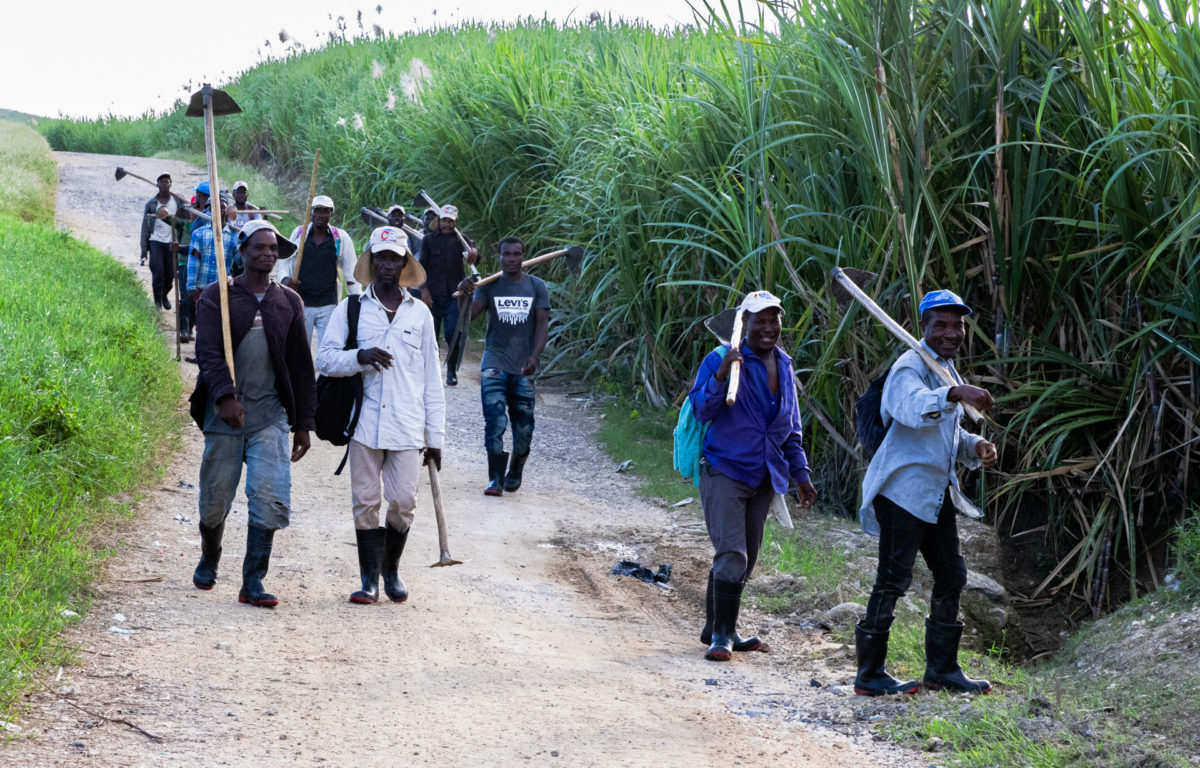
Jorge Sturla, the Central Romana communications director, did not respond to questions about undocumented immigrant labor within the plantation.
While Unicorn Riot was not able to ask the two above-mentioned workers specifics about how they were brought to the Central Romana plantation, Unicorn Riot did speak to a stateless worker who was apprehended by immigration authorities without his work ID on him in La Romana, and was then deported to Haiti and subsequently brought back to the Dominican Republic by a buscón.
The worker was kept in the Haina Detention Center in Santo Domingo, where he went hungry and slept on a cement floor covered in trash, he explained. Some people were hit by guards and he feared for his life. Eventually, he was deported to Haiti, where he spent four days without food until a buscón sent by his community found him and brought him back to the Dominican Republic.
He still owes the buscón the fee, roughly $270 USD, and the interest, about $27 USD per week, which has climbed to an unpayable height, he said.
“The work isn’t enough for that,” the worker explained. Alongside having to pay the debt, he still has to pay for his own and his family’s expenses. The man has been working as a sugar cane cutter his whole life and will likely continue to do so until his death.
“There are always going to be folks who need to take out money when a family member dies or their children get sick and need medical care. They are always going to be vulnerable to cycles of indebtedness. Many of these indicators that you are seeing are going untouched because of the bottom line issue, which is that Central Romana is paying poverty wages,” said the CAL spokesperson.
Living and working in Central Romana’s plantation remains suffocating for the tens of thousands of undocumented Haitian migrants and stateless Dominicans of Haitian descent. Many residents do not leave the sugar cane mazes where their bateyes reside. Immigration raids, especially in majority Black and Haitian descended communities, have spiked. The raids are fueled by nativist sentiment that has already seen activists attacked by right-wing groups, the Dominican border being fully closed for nearly a month, and the Dominican government stopping new visas to Haitian immigrants.
“Everyone Black is Haitian to them,” Daniel said. He did not remember the last time he left the maze of sugar cane to go to the nearest town because he feared being apprehended by immigration authorities. He has already had to flee from them before when they raided the batey he lives in.
“We’re more than poor,” he said, summing up the whole of his experience as a sugar cane cutter and living in the bateyes.
Featured photo by Carlos Berríos Polanco.
About the author: Carlos Berríos Polanco is a freelance journalist covering climate, conflict, and the intersection of the two. You can find him @vaquero2XL on most social media.
Follow us on X (aka Twitter), Facebook, YouTube, Vimeo, Instagram, Mastodon, Threads, BlueSky and Patreon.
Síguenos en Twitter, Facebook, YouTube, Vimeo, Instagram, y Patreon.
Please consider a tax-deductible donation to help sustain our horizontally-organized, non-profit media organization:

